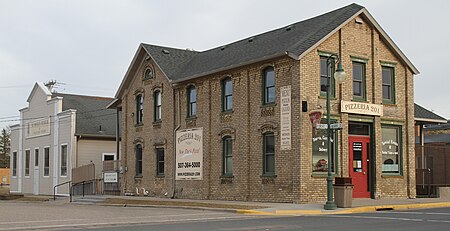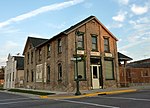Westerman Lumber Office and House
Houses completed in 1880Houses in Le Sueur County, MinnesotaHouses on the National Register of Historic Places in MinnesotaNational Register of Historic Places in Le Sueur County, MinnesotaTourist attractions in Le Sueur County, Minnesota

The Westerman Lumber Office and House is a historic building in Montgomery, Minnesota, United States. The private, commercial structure was placed on the National Register of Historic Places (NRHP) on March 15, 1982. The structure is considered an outstanding example of the brick buildings built in the area of Montgomery and New Prague during the late 19th century, using bricks manufactured in the Minnesota River Valley.
Excerpt from the Wikipedia article Westerman Lumber Office and House (License: CC BY-SA 3.0, Authors, Images).Westerman Lumber Office and House
Ash Avenue Southwest,
Geographical coordinates (GPS) Address Nearby Places Show on map
Geographical coordinates (GPS)
| Latitude | Longitude |
|---|---|
| N 44.437777777778 ° | E -93.580555555556 ° |
Address
Ash Avenue Southwest
Ash Avenue Southwest
56069
Minnesota, United States
Open on Google Maps


